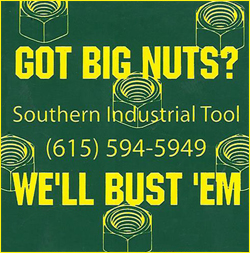Tower Crane Bolt Torque: Critically Important for Owners and Operators
The past five years has seen a resurgence in major construction projects across the U.S., from skyscrapers to new sports arenas to reconstructed bridges. No matter the project, many of them share a common thread: they all need tower cranes during the construction phase.
Tower cranes can extend hundreds of feet into the air and can be based on the ground or elevated as structures rise. Their booms can reach more than 200 feet, with lifting capacities in the neighborhood of 20 tons.
These machines require frequent assembly and disassembly, which means tower crane bolt torque is critical. Every bolt on a tower crane has a specific torque value and it’s the crane owner’s responsibility to ensure each bolt is torqued to that value with a calibrated wrench.
Catherine Whitton
And due to the size and complexity of tower cranes, you may need multiple torque wrenches to apply the correct torque to each bolt.
Hydraulic, electric, manual and pneumatic torque wrenches might all be options, but the key is making sure these tools have been calibrated by an accredited calibration lab.
Remember a calibration certificate provides crane owners with proof that the torque equipment that assembled their crane is properly calibrated, giving them traceability and accountability for each bolt tightened.
Tower and Operator safety begins by asking these questions:
Beyond proper tower crane torque wrench calibration, there are other steps owners of tower cranes can take to make operation safe.
- Are the cranes and derricks at least 10 feet away from any power lines?
- Are the load capacities, operating speeds and instructions posted somewhere the operator can see?
- Does your team conduct daily inspections to make sure the crane and rigging equipment are in good working order?
- Do you have rules that prevent workers from riding on the crane’s load?
- Do you have barricades to keep out unauthorized personnel?
- Are there foot walks that can support a worker, along with handrails and toe boards?
- Is there a working fire extinguisher inside the cab and a functioning audible warning device on board the tower crane?
- Are there locks and seatbelts in the cab?
- Is there just one designated signal worker giving signals to the operator? Is this worker within view of the operator at all times?
- Does the tower crane have boom stops and jib boom stops?
- Have you checked the main boom, jib boom and boom extensions to make sure they’re free from cracks, corrosion or other wear?
- Have you checked the rung ropes? Are they free from distortion, corrosion, cut strands, broken strands or birdcaging (the term for when a wire rope has been forced into compression, giving it a birdcage-like appearance)?
- Has the crane been inspected in the past year? About a tenth of all tower crane mishaps are caused by mechanical failure. If caught beforehand, it’s easy to prevent these accidents.
- Does the crane have a load chart and can the operator understand it?
- Is the load rating chart and other warnings or instructions secured to the crane and easy for the operator to access?
Are you looking for torque tools to help ensure your tower cranes can operate safely? Do you need a way to make sure the torque wrenches you have are properly calibrated?
Southern Industrial Tool can help on both counts. We arethe leading torque equipment specialist in the South, providing hydraulic, pneumatic, electric, battery and manual torque equipment to the crane industry. We have partnered with Maxpro, and have worked with dozens of owners and manufactures of cranes to ensure proper bolt torque is applied on their cranes.
Contact us today to learn more about our tools and torque wrench calibration services. We look forward to working with you to keep your tower crane bolt torque tools calibrated and your equipment and workers safe.

